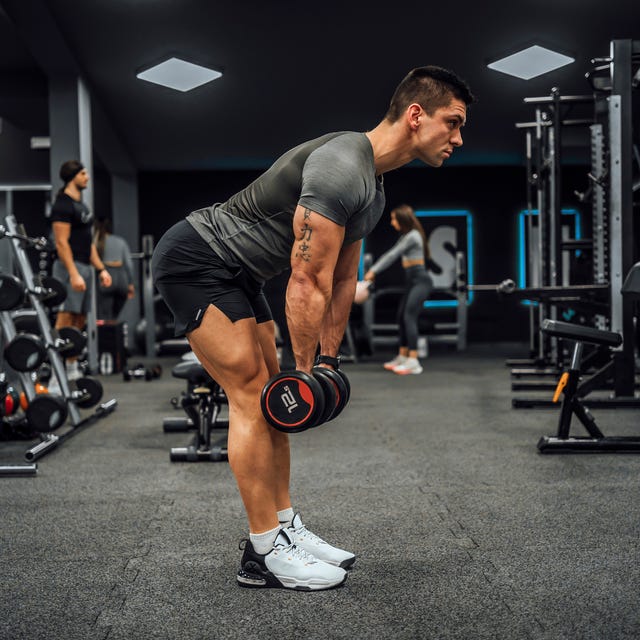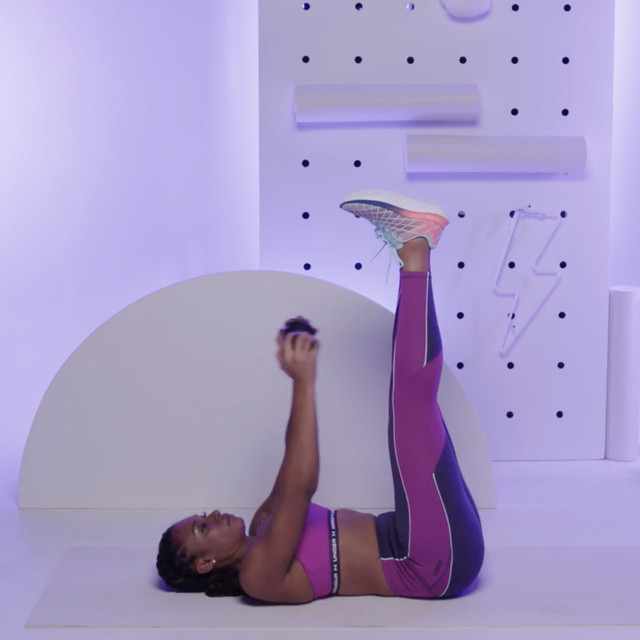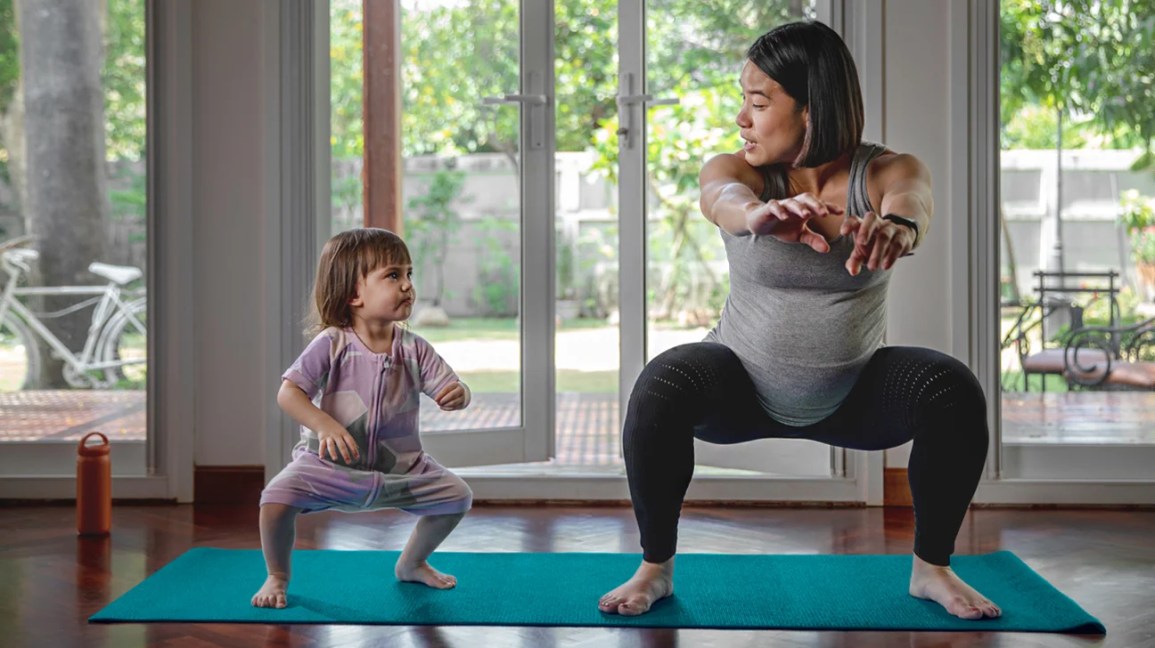Hamstring exercises strengthen the muscles along the back of your thighs. Popular options include lunges, deadlifts, and hamstring curls.
Engaging in a variety of hamstring exercises is crucial for building strength, improving flexibility, and preventing injuries. Whether you’re an athlete, a fitness enthusiast, or simply looking to tone your lower body, targeted workouts can enhance your hamstring muscles’ performance.
These muscles play a significant role in daily activities such as walking, running, and jumping. By incorporating exercises like Romanian deadlifts and Swiss ball hamstring curls into your routine, you can ensure these key muscles receive the attention they need. A strong focus on form and consistency will lead to optimal results and contribute to overall leg development. Prioritizing hamstring workouts not only boosts muscle growth but also balances your leg training, which is essential for a symmetrical and functional lower body.

Credit: www.menshealth.com
Why Focus On Hamstring Exercises
Focusing on hamstring exercises is vital for an effective fitness regime. The hamstrings play a crucial role in supporting various movements. Strengthening these muscles is key for both performance and wellbeing. Let’s uncover the reasons behind emphasizing hamstring workouts.
Benefits For Posture And Stability
Strong hamstrings contribute significantly to good posture. They support your pelvis and balance your body while standing or moving.
- Reduce back strain: Hamstrings support the lower back.
- Better balance: They help maintain upright stability.
- Enhance mobility: Strong muscles allow fluid movement.
Injury Prevention Through Strengthening
Bolstering hamstring strength is key in preventing injuries. Well-conditioned hamstrings are less prone to strains and tears.
- Lower risk of leg injuries.
- Less chance of muscle imbalance.
- Support joints especially the knees.
Anatomy Of The Hamstring Muscles
The hamstring is not just a single muscle. It is a powerful group of muscles located at the back of your thigh. This group includes three key muscles. First is the semitendinosus, located on the inner side. Next, we have the semimembranosus, which lies beneath the semitendinosus. Lastly, there’s the biceps femoris, which splits into two parts, making up the outer portion of your thigh. These muscles play a crucial role in knee flexion and hip extension.
Understanding Muscle Groups
Hamstring muscles work together like a well-oiled machine. They are vital for daily activities like walking, running, and jumping. Here’s a simplified breakdown of each muscle’s function:
- Semitendinosus: Helps bend the knee and extend the hip.
- Semimembranosus: Assists in thigh extension and controls leg movement.
- Biceps Femoris: Crucial for sprinting and rapid leg movement.
Imagine these muscles as ropes that help pull and stabilize your legs. Keeping them strong and flexible is essential for peak performance.
Connections To Performance
The hamstrings’ strength and flexibility are directly linked to your physical abilities. Think of your body as a chain where your hamstrings are a central link. Strong hamstrings mean:
- Better running speed.
- Enhanced jumping ability.
- Reduced risk of leg and back injuries.
A focus on hamstring exercises can lead to serious gains in overall athletic performance. Weak or tight hamstrings, on the other hand, can be a major setback. They can lead to imbalance and injuries, impacting your ability to perform at your best.
Warming Up For Hamstring Workouts
Proper warm-up is crucial before diving into any hamstring exercises. By warming up, you reduce injury risk and improve performance. The focus here is on two key warm-up strategies: dynamic stretching and activation techniques. Both prepare your hamstrings for an intense workout.
Dynamic Stretching
Dynamic stretching boosts blood flow and flexibility. This type of stretching involves active movements. It warms up your muscles effectively.
- Leg swings: Stand tall and swing one leg back and forth. Keep your movements controlled.
- Walking lunges: Take a step forward, lunge, then bring your rear leg forward. Repeat this while moving ahead.
- Inchworms: Bend over, walk your hands out into a plank, then walk your feet toward your hands.
Hamstring Activation Techniques
Activation techniques ‘wake up’ your hamstrings. They ensure these muscles are ready to work. This part is essential for preventing strains.
- Resistance band pull-throughs: Anchor a band, hinge forward, and pull the band between your legs.
- Glute bridges: Lie down, bend your knees, and lift your hips. Squeeze your glutes at the top.
- Bird dogs: From hands and knees, extend one arm and the opposite leg. Keep your balance and core tight.
:max_bytes(150000):strip_icc()/The-Best-Butt-Workout-Moves-of-All-Time-According-to-Trainers-GettyImages-1300504533-1-2000-91583ef5d5434027adff293d08d3adf8.jpg)
Credit: www.shape.com
Top Hamstring Strengthening Exercises
Building strong hamstrings is key for balance, speed, and injury prevention. Hamstrings play a vital role in most lower body activities. Weak or tight hamstrings can lead to poor posture and back pain. Here are some of the most effective hamstring strengthening exercises to add to your workout routine.
Romanian Deadlifts
A fundamental exercise targeting your hamstrings is the Romanian Deadlift (RDL). This move not only strengthens but also increases hamstring flexibility.
- Stand with feet hip-width apart.
- Hold weights in front of thighs, palms facing you.
- Keep knees slightly bent.
- Hinge at the hips; lower weights as you push your buttocks back.
- Keep your back straight; lower until a stretch is felt.
- Lift back to the starting position.
Hamstring Curls
No equipment? No problem. Hamstring curls can be done anywhere.
- Lie face down on a flat surface.
- Bend your knees and lift heels towards your buttocks.
- Use your hamstrings to pull heels up.
- Lower slowly and repeat.
Glute-ham Raises
Glute-Ham Raises are advanced but worth learning.
- Start on a glute-ham machine or with ankles secured.
- Face down, with knees just behind the pad.
- Lower your torso down towards the ground, knees bending.
- Push up through your feet and raise your body back up.
Advanced Hamstring Toning Moves
Hamstrings are key to lower body strength. They propel us in running and stabilize our movement. To get them in top shape, focusing on advanced exercises can make a significant difference. This guide takes your hamstrings beyond the basics. Push your limits with these challenging moves that aim at strengthening and toning your muscles to perfection.
Stability Ball Exercises
Stability balls add an extra challenge to workouts. They improve balance, strengthen the core, and sculpt the hamstrings.
- Stability Ball Hamstring Curl: Lie on the floor, place your heels on the ball, and lift your hips. Roll the ball towards you and back.
- Stability Ball Glute Bridge: Position your heels on the ball. Raise your hips to form a straight line from shoulders to heels.
- Single-Leg Hamstring Curl: Perform the curl with one leg for added difficulty.
Plyometric Training For Muscle Tone
Plyometric training engages the hamstrings in explosive movements. This boosts muscle tone and power.
These exercises include:
- Box Jumps: Jump onto a box and step down. It boosts power in the hamstrings.
- Jump Squats: Perform a squat followed by an explosive jump. It tones the entire leg.
- Single-Leg Deadlift Hops: Combine balance and plyometrics for a challenging hamstring workout.
:max_bytes(150000):strip_icc()/12-Moves-to-Target-the-Backs-of-Thighs-Photo-by-Jena-Cumbo-8eeb6c8551f040b7a459d330402466ec.jpg)
Credit: www.shape.com
Integrating Hamstring Exercises Into Your Routine
When you think of leg day, don’t forget your hamstrings! These important muscles deserve a spot in your exercise plan. Strong hamstrings are key for running, jumping, and overall stability. Keep reading to learn how to make them part of your workouts.
Creating A Balanced Workout Plan
A well-rounded workout plan targets all muscle groups. This includes the hamstrings. Pair hamstring exercises with quadriceps workouts to maintain muscular balance in your legs. This balance helps to prevent injuries. Use the following table as a quick reference for a balanced leg workout:
| Quadriceps Exercise | Hamstring Exercise |
|---|---|
| Squats | Deadlifts |
| Leg Press | Leg Curls |
Frequency And Repetition Recommendations
Work your hamstrings 2-3 times a week to see improvements. Start with lower weights and higher repetitions. This approach helps to build endurance and prevent injuries. A beginner can follow the repetition range below:
- Lightweight: 12-15 reps
- Moderate weight: 10-12 reps
- Heavier weight (as you progress): 6-8 reps
Remember to rest your hamstrings for at least 48 hours between workouts. This rest period is necessary for muscle recovery and growth.
Safety Considerations And Contraindications
Exercising your hamstrings can greatly improve leg strength and flexibility. But it’s crucial to exercise safely to prevent injury. This section explores how to keep your hamstrings healthy during workouts. Keep in mind safety steps and what exercises might not suit everyone.
Proper Form And Technique
To avoid injuries, focus on proper form. Using correct technique in hamstring exercises is essential. Here are steps to ensure you’re on the right track:
- Start Slow: Begin with light weights or bodyweight exercises. Build intensity over time.
- Keep Alignment: Your body should align properly in every move. This prevents strain.
- Smooth Motions: Perform exercises with controlled, smooth movements. Avoid jerky actions.
- Consult Professionals: A trainer can guide your form and suggest improvements.
Recognizing And Responding To Pain
Listening to your body is vital when exercising. Pain can signal a problem. Here’s how to react:
- Stop if it Hurts: Pain during an exercise is a red flag. Take a break immediately.
- Assess the Pain: Determine the pain type. Sharp, intense pain is a warning sign.
- Rest and Recover: Give your body time to heal. Rest until the pain subsides.
- Seek Help: Persistent or severe pain calls for a doctor’s attention.
Remember: Hamstring exercises should stretch and strengthen, not cause pain. Always prioritize your well-being in your fitness journey.
Monitoring Progress With Hamstring Exercises
Improving hamstring health is crucial for mobility and overall fitness. As you embark on your hamstring strengthening journey, it’s vital to monitor your progress. This ensures exercises are effective and reduces injury risk. Regular monitoring helps tweak your routines for the best results. Let’s dive into how you can measure your gains and adjust your efforts for continual improvement.
Measuring Strength And Flexibility Gains
Tracking your progress is a sure-fire way to stay motivated. Use simple tests regularly to see how you fare.
- Record initial performance: Note your starting point to compare later.
- Use a flexibility test: See how far you can reach in a seated or standing position.
- Perform a strength test: Count how many leg curls you can do or check the maximum weight you can lift.
After several weeks, repeat these tests. Improved numbers show progress. Keep a log in a table to visualize improvements:
| Date | Flexibility Reach (cm) | Leg Curls (reps) | Max Weight (lbs) |
|---|---|---|---|
| Start Date | … | … | … |
| Check-in Date | … | … | … |
Adjusting Your Program For Continued Improvement
Staying on the path to stronger hamstrings means evolving your workout. Observe your body’s response and adapt accordingly.
- Increase weights if current ones become manageable.
- Add more reps or sets for sustained muscle growth.
- Try new exercises to challenge different muscle fibers.
- Rest appropriately to avoid overtraining and ensure recovery.
Update your plan every month or when your current routine feels less challenging. This keeps your muscles guessing and continues the path to stronger, more flexible hamstrings.
Frequently Asked Questions Of Hamstring Exercises
What Is The Best Exercise For Your Hamstrings?
The Romanian deadlift is an excellent exercise for strengthening hamstrings. It targets the muscle effectively while also engaging your glutes and lower back.
How Do You Fix Weak Hamstrings?
To fix weak hamstrings, incorporate strength training exercises like deadlifts and bridges, stretch regularly, ensure proper form during workouts, gradually increase workout intensity, and consider physical therapy if you experience persistent weakness or pain.
What Is The Best Exercise For Tight Hamstrings?
Stretching exercises, such as standing or seated hamstring stretches, are excellent for loosening tight hamstrings. Incorporate yoga poses like the downward dog for flexibility. Regular stretching can improve hamstring elasticity. Always warm up before stretching to prevent injury.
How Can I Target My Hamstrings At Home?
To target your hamstrings at home, perform exercises like Romanian deadlifts, glute bridges, and hamstring curls using resistance bands or body weight. Consistently include these movements in your workout routine for effective engagement and strengthening of hamstring muscles.
Conclusion
Strengthening your hamstrings is crucial for mobility and injury prevention. These exercises can elevate your fitness routine and enhance muscle balance. Implement them consistently for best results, and always prioritize form. Remember, a well-rounded workout promotes overall wellness. Keep moving forward, and your hamstrings will thank you!


